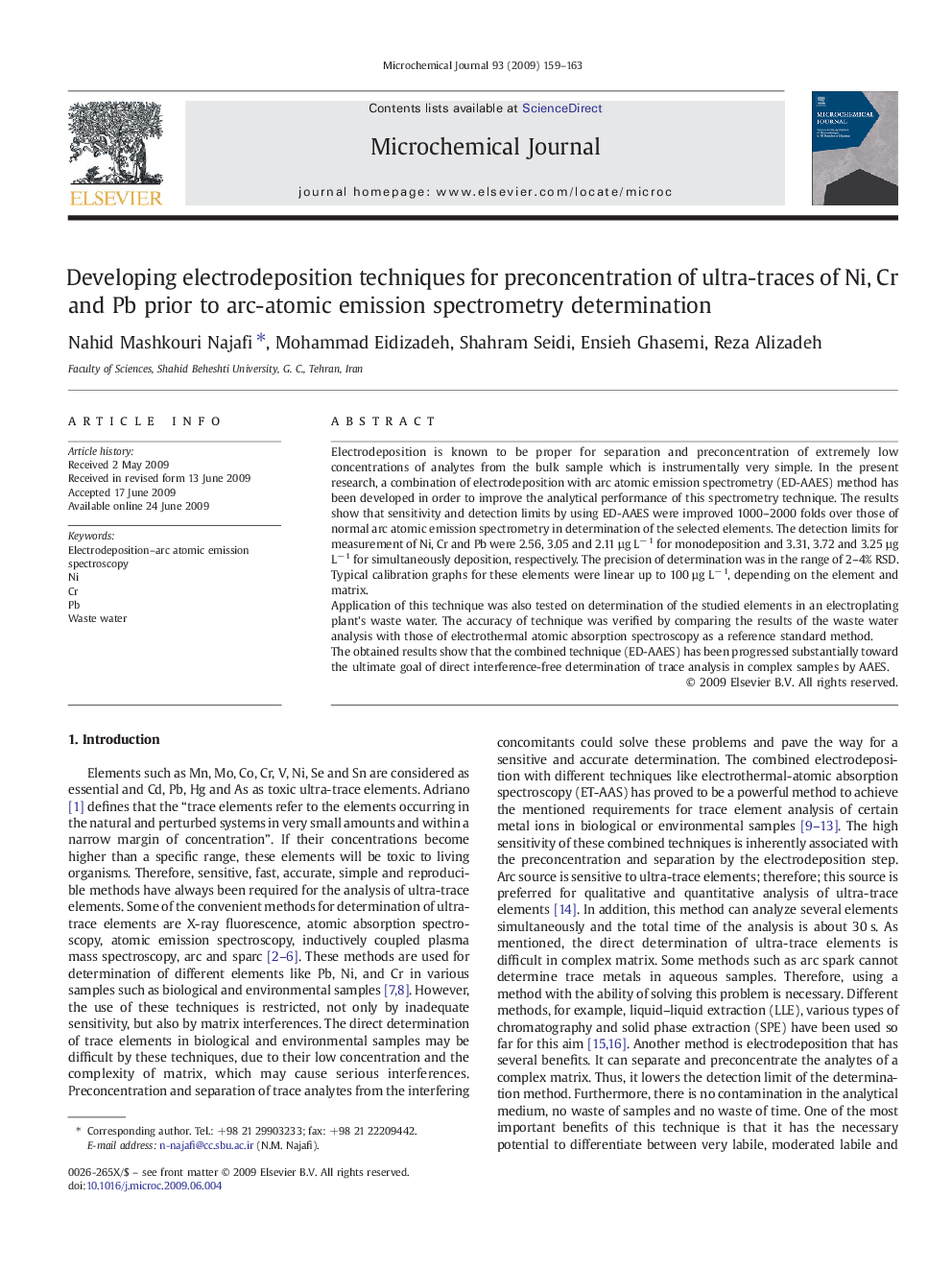| Article ID | Journal | Published Year | Pages | File Type |
|---|---|---|---|---|
| 1228059 | Microchemical Journal | 2009 | 5 Pages |
Electrodeposition is known to be proper for separation and preconcentration of extremely low concentrations of analytes from the bulk sample which is instrumentally very simple. In the present research, a combination of electrodeposition with arc atomic emission spectrometry (ED-AAES) method has been developed in order to improve the analytical performance of this spectrometry technique. The results show that sensitivity and detection limits by using ED-AAES were improved 1000–2000 folds over those of normal arc atomic emission spectrometry in determination of the selected elements. The detection limits for measurement of Ni, Cr and Pb were 2.56, 3.05 and 2.11 µg L− 1 for monodeposition and 3.31, 3.72 and 3.25 µg L− 1 for simultaneously deposition, respectively. The precision of determination was in the range of 2–4% RSD. Typical calibration graphs for these elements were linear up to 100 µg L− 1, depending on the element and matrix.Application of this technique was also tested on determination of the studied elements in an electroplating plant's waste water. The accuracy of technique was verified by comparing the results of the waste water analysis with those of electrothermal atomic absorption spectroscopy as a reference standard method.The obtained results show that the combined technique (ED-AAES) has been progressed substantially toward the ultimate goal of direct interference-free determination of trace analysis in complex samples by AAES.
